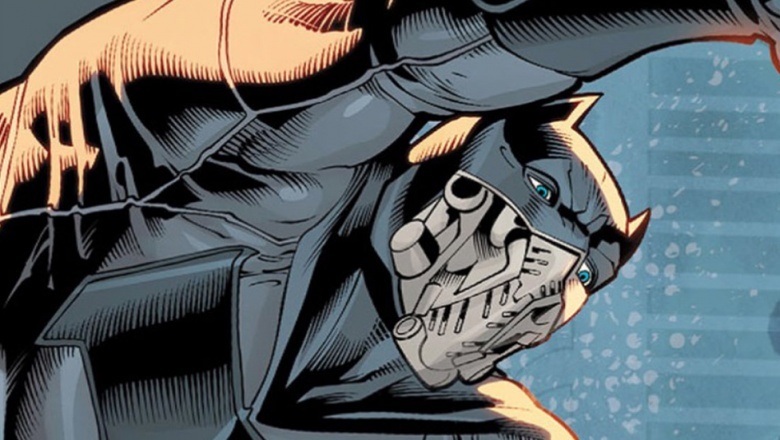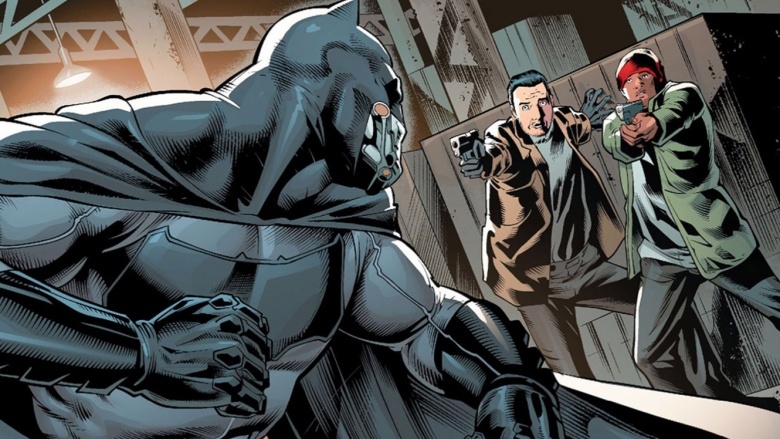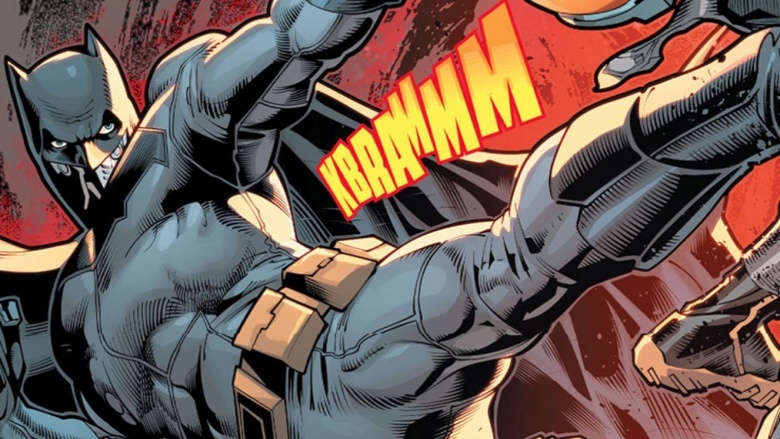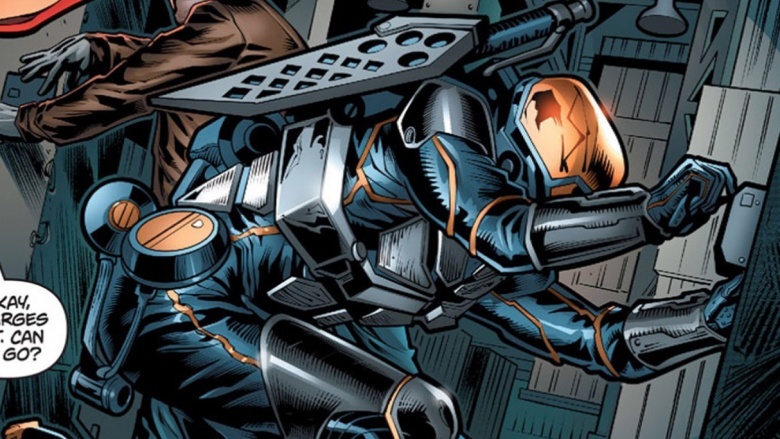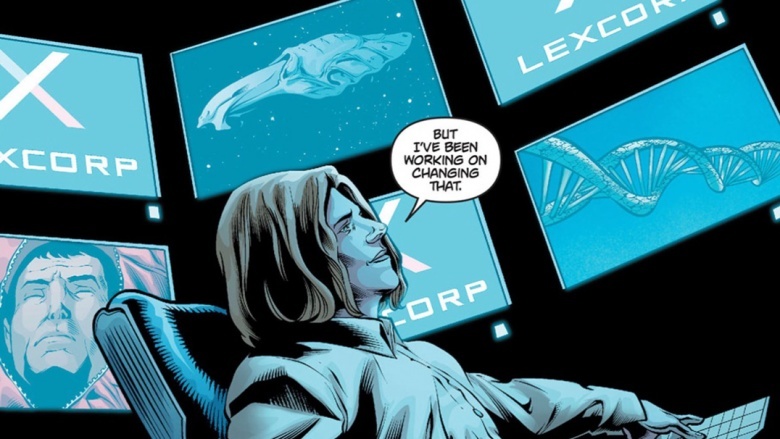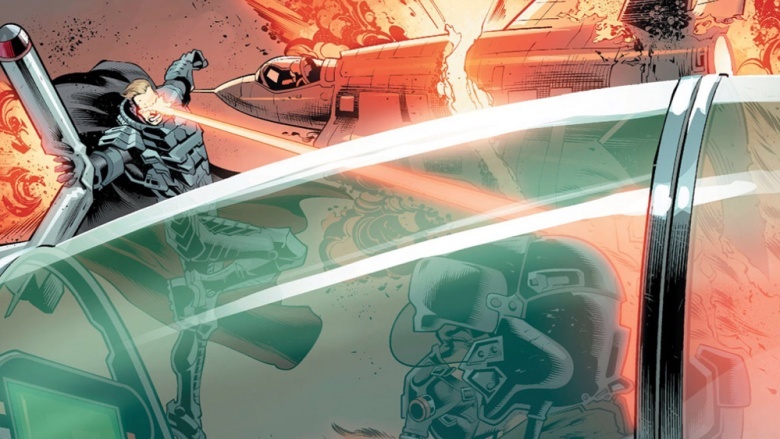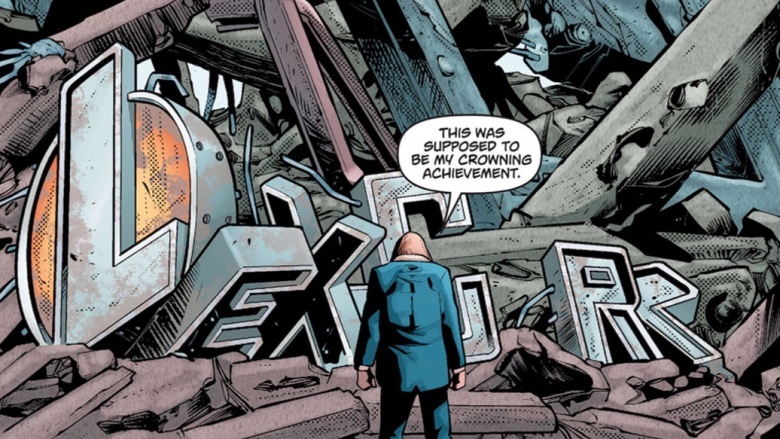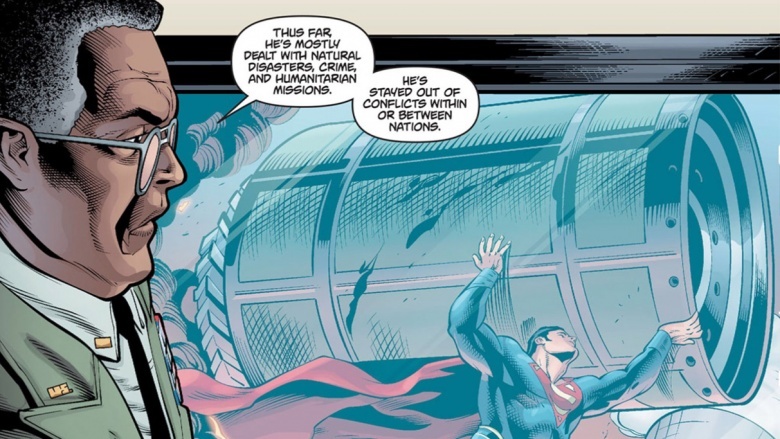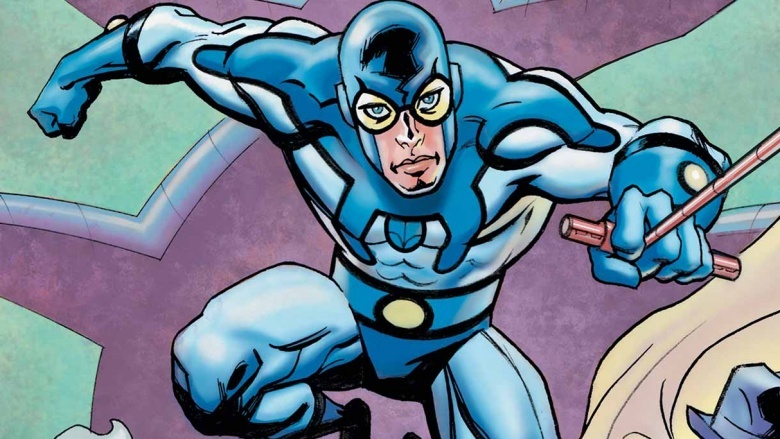What We Learned From Batman V Superman's Prequel Comics
Batman v Superman: Dawn of Justice picks up a few years after the events of Man of Steel, and with a continuity that completely ignores the entire Christopher Nolan Dark Knight trilogy (and all the other Batflicks), so everything you thought you knew about the DC Extended Universe is wrong. DC's new film continuity picks up in the middle of the action, leaving tons of unanswered questions. Fortunately, a few hints have been dropped in DC Comics' five-issue Dawn of Justice prequel comic series. Luckily, you don't need the Daily Planet to tell you the background of Batman v Superman. Warning: you're venturing into potential spoiler territory.
Batman has been around for 20 years (or more)
The series' first issue concerns itself with Batman and his legacy in Gotham. A low-level criminal who's at least fifty remarks that Batman was around when he first entered his life of crime, which means that this continuity's Batman is not a direct product of Superman's destruction, but a vigilante hero who's been active for a very long time and already has the resources and experience to fight anyone he sees as a threat to the innocent. There were some questions as to whether or not Affleck's Batman was going to be a wealthy Year One newbie, but this establishes Batman as a guy who's already a long-lived legend in Gotham.
Batman is mean now
The same aging criminal from the first prequel comic also remarks that Batman has recently changed. Batman used to be a guy who just beat you up a bit and left you for the cops, but the new Caped Crusader, living in a post-Superman world, has become merciless and violent, struggling against a new feeling of helplessness. By the end of the comic, Batman shows up and the criminals drop their guns, but Batman still beats them severely, despite them being disarmed. We won't get to see the evolution of Batman from a simple crime-fighter to a madman, because he's already there. Did we really need another origin story anyhow?
Firefly is out and about, presumably burning things
Whenever a new continuity pops up, fans always want to see which villains have come along for the ride. We know that the Joker, Suicide Squad, Zod, and Doomsday are all here, but these prequel comics also reveal Firefly, a low-level Batman villain who, as expected, is a bit of a pyromaniac. Firefly is generally a pretty good throwaway villain, but his appearance in this new continuity opens the way for all kinds of cheap Batman baddies, from Killer Moth to Calendar Man.
LexCorp has surveillance in Gotham
Even though Batman is a stellar detective, he doesn't really notice the LexCorp cameras that seem to be installed all over Gotham. This network could potentially reveal his identity as they track the Dark Knight wherever he goes. It's a weird oversight on Batman's part, but it's a pretty solid answer as to how Lex Luthor could know the identities of his favorite two superheroes. It sounds like Bruce Wayne has gotten photogenic.
There's a black market in Kryptonian tech
One issue of the comic series focuses on Lois Lane interrogating a businessman about valuable Kryptonian technology that disappeared from the Metropolis disaster site after General Zod's attack. Not only is this stuff worth a lot, but it apparently has some kind of effect on humans which we didn't get to really see in Man of Steel. It probably has a whole lot to do with the appearance of the genetic mutant Doomsday in Dawn of Justice. By the end of the comic, LexCorp purchased the quarantined wreck site, no doubt to dig for more alien tech, and consume even more of the city's landscape.
Lex is a beloved entrepreneur
Aside from a strangely serious Super Bowl commercial, we've really only seen the wacky, energetic, behind-the-scenes version of Jesse Eisenberg's Lex Luthor. The prequel comics flesh out his character a whole lot more, portraying him as a popular and magnanimous businessman whose main interest is rebuilding Metropolis after the Zod fight. On the surface, he's all about keeping people employed and making the word a better place. It's a sharp contrast against the usual portrayal of Lex, and in a lot of ways, it's hard to disagree with anything he's saying about keeping humanity safe. He seems genuine, but his real motivations will become much clearer on film—presumably when he goes bald.
The government is studying Superman
At the end of Man of Steel, we see that Superman has taken down a satellite that the United States government launched to keep tabs on him, but that apparently hasn't stopped them from developing new ways to track and monitor the alien hero. While the government is aware that the constant observation of Superman might make him angry, they're willing to take that risk. On top of that, a man named General Elkins seems to know some stuff about Kal-El that hasn't quite been revealed to us yet. Did he find different shades of Kryptonite or perhaps deets on Doomsday? Maybe he found a VHS copy of Superman IV: The Quest for Peace.
Hints of Blue Beetle
It's a minor drop in the bucket of DC continuity, but in the prequel series' fifth issue, Lex Luthor is seen reading a tablet that mentions Thomas Kord, a tech developer who has business in Metropolis. Comic fans will recognize the name Ted Kord as the Blue Beetle, an often down-on-his-luck tech guy whose company is eventually absorbed by Wayne Enterprises as their research and development division. Lex is probably threatened by anything associated with his greatest competitor working its way onto his turf, so it's just more fuel added to the fire that Lex has burning for all heroes. Unfortunately, we don't think the Blue Beetle will be making his cinematic debut before Cyborg or Aquaman.
